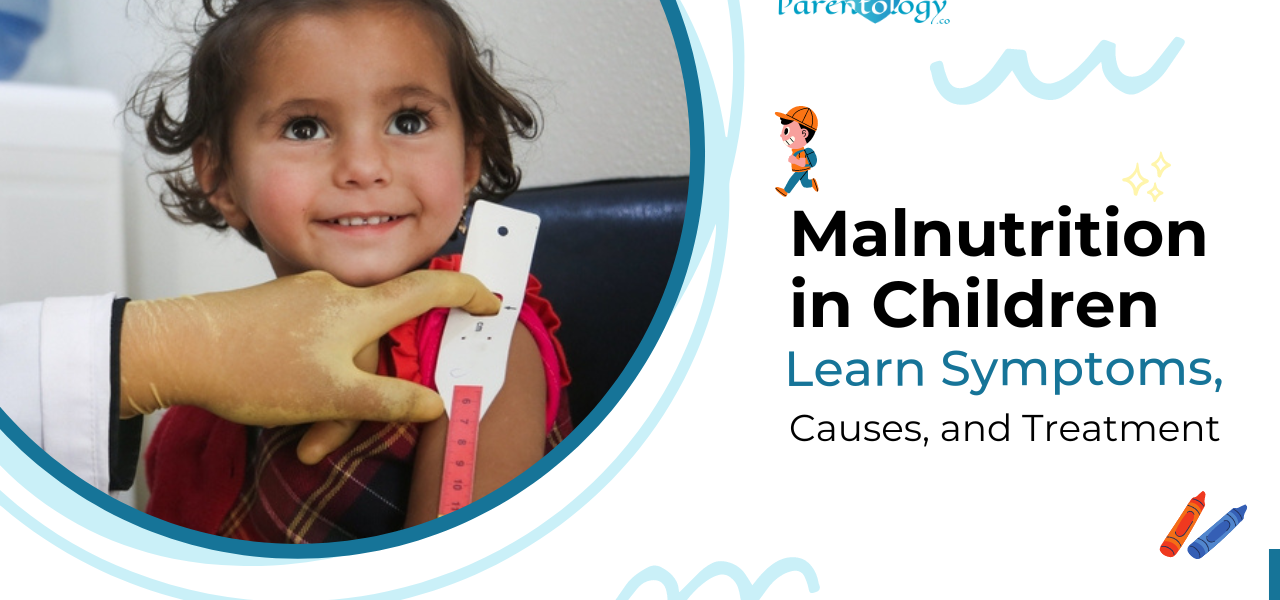Malnutrition in Children: Unveiling Symptoms, Causes, and Treatment
In the realm of childhood health, malnutrition stands as a silent but significant adversary. As parents and caregivers, understanding the intricate web of malnutrition symptoms, causes, and treatments is paramount for ensuring the optimal well-being of our children.
What is Malnutrition?
Malnutrition is a condition where a child’s body does not receive the proper nutrients it needs to grow and function correctly. This can lead to serious health issues and developmental challenges. Let’s delve into the intricate details of malnutrition.


Causes of Malnutrition in Children
Malnutrition in children can result from various factors. Understanding these causes is crucial for effective prevention and management.
- Inadequate Nutrition: Insufficient intake of essential nutrients, including proteins, vitamins, and minerals, can contribute to malnutrition.
- Poor Diet Diversity: A diet lacking in diversity can limit the range of nutrients a child receives, leading to malnutrition.
- Economic Factors: Families facing economic challenges may struggle to afford nutritious foods, impacting their children’s nutritional intake.
- Health Conditions: Certain health conditions, such as digestive disorders or chronic illnesses, can hinder nutrient absorption.
Types of Malnutrition: A Brief Overview
Malnutrition manifests in various forms, each presenting unique challenges to health and well-being. Understanding the different types of malnutrition is essential for effective prevention and intervention. The primary types include:
- Protein-Energy Malnutrition (PEM): PEM results from insufficient intake of both protein and calories. It often leads to stunted growth, weakened immune system, and weight loss.
- Micronutrient Deficiencies: This type involves a lack of essential vitamins and minerals, such as iron, vitamin A, and iodine. Deficiencies can cause anemia, vision impairment, and other health issues.
- Undernutrition: Undernutrition occurs when the body receives fewer nutrients than needed for normal growth and maintenance. It encompasses stunting (low height for age), wasting (low weight for height), and underweight (low weight for age).
- Overnutrition: Contrary to undernutrition, overnutrition involves excessive intake of calories, often accompanied by poor dietary choices. This can lead to obesity and related health issues, such as diabetes and cardiovascular diseases.
- Marasmus: This severe form of malnutrition results from a prolonged deficiency of calories and protein. It leads to extreme weight loss, muscle wasting, and overall physical deterioration.
- Kwashiorkor: Kwashiorkor is characterized by a lack of protein despite sufficient caloric intake. Symptoms include edema (fluid retention), skin lesions, and compromised immune function.
- Hidden Hunger: Also known as micronutrient malnutrition, hidden hunger refers to a deficiency of essential vitamins and minerals without apparent physical signs. It can affect cognitive development and overall health.
Malnutrition Symptoms
Recognizing the Red Flags
Malnutrition symptoms can manifest in various ways, affecting both physical and cognitive aspects.
- Weight Loss: Sudden and unexplained weight loss is a common indicator of malnutrition in children.
- Fatigue: Malnourished children often exhibit excessive tiredness and lack of energy.
- Delayed Growth: Poor physical development, including stunted height, can be a visible sign.
- Poor Concentration: Malnutrition can impact cognitive abilities, leading to difficulty concentrating and learning.
Signs of Malnutrition: What to Look For
Identifying malnutrition symptoms is crucial for timely intervention. Here are some specific signs to watch out for:
- Brittle Nails and Hair: Malnourished children may have brittle, easily breakable nails and hair.
- Pale Skin: A pale complexion could indicate anemia, a common consequence of malnutrition.
- Swollen or Bleeding Gums: Nutrient deficiencies may lead to oral health issues, such as swollen or bleeding gums.
Preventing Malnutrition: A Proactive Approach
While understanding malnutrition symptoms and treatments is crucial, prevention remains the cornerstone of ensuring a child’s optimal health. Here are key strategies for preventing malnutrition in children:
- Promote Breastfeeding: Breast milk provides essential nutrients and antibodies, offering unmatched benefits for a baby’s development. Encouraging and supporting breastfeeding during the initial months can significantly reduce the risk of malnutrition.
- Introduce Nutrient-Rich Foods: As children transition to solid foods, incorporating a diverse range of nutrient-rich foods is vital. Vegetables, fruits, lean proteins, and whole grains contribute to a well-rounded diet.
- Regular Health Check-ups: Regular health check-ups with pediatricians allow for early detection of any nutritional deficiencies or growth issues. This proactive approach enables timely intervention and prevention of malnutrition.
- Education on Balanced Nutrition: Schools and communities can play a pivotal role by educating children and parents about the importance of balanced nutrition. Workshops, educational materials, and awareness campaigns foster a culture of informed food choices.


Empowering Parents: Practical Tips for Nutritional Well-being
In the pursuit of preventing malnutrition symptoms, parents play a pivotal role in shaping their child’s eating habits. Here are practical tips to empower parents in ensuring their child’s nutritional well-being:
- Meal Planning: Devote time to plan balanced meals that include a variety of food groups. Incorporate fruits, vegetables, lean proteins, and whole grains to provide a diverse range of nutrients.
- Educational Initiatives: Attend workshops or classes on nutrition. Learning about portion sizes, essential nutrients, and healthy cooking methods equips parents with the knowledge to make informed decisions.
- Create a Positive Eating Environment: Foster a positive atmosphere during mealtimes. Avoid distractions such as television or electronic devices, allowing children to focus on their food and develop a healthy relationship with eating.
- Involve Children in Cooking: Engage children in age-appropriate cooking activities. Involving them in meal preparation can ignite their interest in nutritious foods and empower them to make healthy choices.
- Encourage Hydration: Adequate hydration is vital for overall health. Encourage the consumption of water throughout the day and limit sugary beverages that contribute to empty calories.
Global Perspective: Malnutrition Beyond Borders
Malnutrition is not confined to specific geographical boundaries. While it is prevalent in developing countries, developed nations also grapple with this issue. Factors such as food insecurity, economic disparities, and cultural practices contribute to malnutrition globally.
Collaborative efforts on an international scale are essential to address malnutrition comprehensively. Initiatives like community-based nutrition programs, global awareness campaigns, and partnerships between governments and non-profit organizations are vital in creating sustainable solutions.
Treatment and Management
Medical Interventions
In severe cases, medical intervention is necessary. This may involve nutritional supplements, medications, or hospitalization.
Nutritional Rehabilitation
A holistic approach to treatment includes improving the child’s diet, often with the guidance of a nutritionist. This involves incorporating a variety of nutrient-rich foods.
Emotional Support
Malnutrition doesn’t only affect the physical health of a child; it can also impact their emotional well-being. Providing emotional support is a crucial aspect of the recovery process.
The Role of Technology in Addressing Malnutrition
In the digital age, technology plays a significant role in disseminating information and providing support. Mobile apps, online resources, and telehealth platforms can be invaluable tools for parents seeking guidance on nutrition and child health. These technological innovations bridge gaps in access to healthcare information, connecting families with expert advice.
Advocacy for Policy Change
Advocacy for policy change is crucial for creating an environment that supports healthy nutrition for children. Policies addressing food affordability, school meal programs, and community-based interventions contribute to a comprehensive approach to the fight against malnutrition.
Engaging Communities: Strength in Unity
Communities are powerful agents of change. Engaging communities in initiatives that promote nutrition awareness, provide resources, and support struggling families creates a network of resilience against malnutrition. Local community leaders, schools, and healthcare professionals can collaborate to implement sustainable solutions.
A Glimpse into Promising Research
Ongoing research continually unveils new insights into malnutrition and its effects on children. Studies exploring the interplay between genetics, environment, and nutrition provide valuable information for developing targeted interventions. Stay tuned for evolving research that may shape future strategies in the battle against childhood malnutrition.
Cultural Considerations in Nutrition
Understanding and respecting cultural practices surrounding food is essential in promoting healthy eating habits. Cultural diversity can influence dietary preferences, and acknowledging these nuances ensures that nutritional guidance is culturally sensitive.
Collaborating with community leaders, educators, and healthcare professionals to develop culturally tailored nutrition programs fosters inclusivity and increases the effectiveness of interventions.
Media Literacy for Healthy Choices
In today’s digital age, children are exposed to a plethora of information through various media channels. Media literacy programs can empower children to make informed choices about the foods they consume. Teaching them to critically evaluate advertisements and promotional content contributes to developing a discerning approach to nutrition.
The Impact of Early Intervention
Early intervention is a cornerstone in mitigating the effects of malnutrition. Regular health check-ups, growth monitoring, and timely dietary adjustments can address nutritional deficiencies before they escalate. Collaborating with healthcare professionals ensures that children receive the necessary support during critical developmental stages.
Collaboration Between Healthcare and Education Systems
Fostering collaboration between healthcare and education systems creates a holistic approach to addressing malnutrition. School health programs, nutritional education in curricula, and partnerships between schools and healthcare providers contribute to a comprehensive strategy for promoting child health.
Building Resilience Through Support Systems
Support systems are integral to the well-being of families facing malnutrition challenges. Community support groups, online forums, and local organizations dedicated to child health create a network where parents can share experiences, seek advice, and access resources.
Continued Advocacy for Nutritional Policies
Advocacy for robust nutritional policies remains crucial in addressing malnutrition on a broader scale. Supporting initiatives that promote access to nutritious foods, improve food labeling, and advocate for policies addressing food deserts contributes to creating an environment conducive to child health.
A Vision for a Malnutrition-Free Future
Envisioning a future free from the shackles of malnutrition requires a collective commitment. By embracing proactive measures, educating communities, and fostering a supportive environment, we can pave the way for generations that thrive in health and well-being.
Championing a Bright Future
As we navigate the intricate landscape of childhood malnutrition, it is essential to approach the issue with a sense of collective responsibility. By understanding malnutrition symptoms, advocating for policy change, leveraging technology, and engaging communities, we can collectively champion a bright future for the next generation.


Conclusion: Nourishing a Healthy Future
In conclusion, understanding the nuances of malnutrition in children empowers parents and caregivers to take proactive measures. Recognizing malnutrition symptoms, addressing the root causes, and embracing a holistic treatment approach can pave the way for a healthier, thriving future for our children.
For more insights on parenting and child health, visit Parentology. Together, let’s nurture a generation that flourishes in well-being and resilience. Also learn more about Baby’s redness around eyes, baby’s sleeping dresses, baby feeding, etc from Parentology.
FAQs About Malnutrition Symptoms in Children
Q1: How is malnutrition diagnosed in children?
A1: Malnutrition is diagnosed through a combination of physical examinations, blood tests, and assessing the child’s dietary habits.
Q2: Can malnutrition be prevented?
A2: Yes, ensuring a well-balanced diet, regular health check-ups, and addressing economic challenges can help prevent malnutrition.
Q3: Are there long-term effects of childhood malnutrition?
A3: Yes, malnutrition can have lasting effects on physical and cognitive development if not addressed promptly.
Q4: What role does parental education play in preventing malnutrition?
A4: Parental education is vital in promoting awareness about proper nutrition and creating a supportive environment for a child’s health.
Q5: How can schools contribute to addressing malnutrition symptoms?
A5: Schools can play a role by offering nutritious meals, educating students about healthy eating habits, and fostering a culture of well-being.
Q6: Are there community-based initiatives to combat childhood malnutrition?
A6: Yes, various community-driven programs focus on providing nutritional support, education, and resources to families facing malnutrition challenges.
Q7: What are the common myths about childhood malnutrition?
A7: Common myths include misconceptions about the importance of certain foods and the belief that malnutrition only affects impoverished communities.
Q8: Is malnutrition solely a problem in developing countries?
A8: No, malnutrition is a global issue that can affect children in both developing and developed countries.
Q9: How can parents encourage healthy eating habits in children?
A9: Parents can encourage healthy eating by being role models, involving children in meal preparation, and making nutritious foods appealing.
Q10: Can malnutrition affect a child’s mental health?
A10: Yes, malnutrition can impact mental health, leading to issues like anxiety and depression. Early intervention is crucial.
Infographics-




